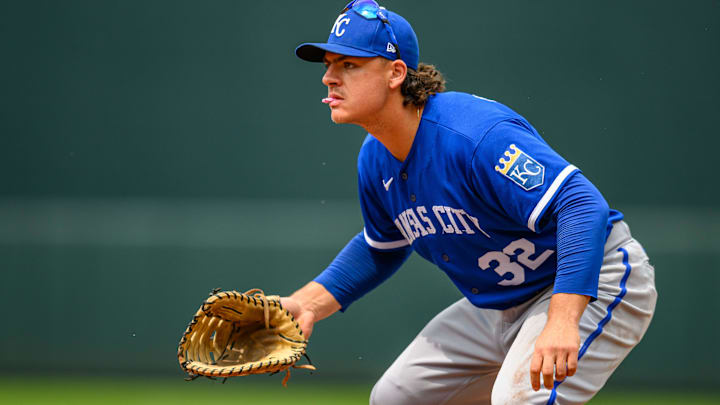The November 19 deadline for teams to set their 40-man rosters for Rule 5 draft purposes came and went without an iota of drama for the Kansas City Royals. None of the three pitchers they added to 40-man roster — or what baseball refers to technically as the 40-member "major league active reserve list" — came as any surprise. Even Eric Cerantola, who was selected alongside Noah Cameron and Luinder Avila, was an expected addition, even though his well-known control problems cast some doubt on his chances.
Still, Tuesday's roster decisions raised at least three interesting questions.
Why didn't the KC Royals fill all of their available 40-man roster spots?
Nothing about the deadline required Kansas City to assign players to the half-dozen 40-man roster vacancies they carried into the day. The Royals will fill those openings eventually, but probably won't be in any hurry to do so.
Having three spots open when the Rule 5 draft kicks off at next month's Winter Meetings means the team is eligible to pick up some talent, but whether they choose to draft anyone is another story. The cost of exercising that right is $100,000 payable to the organization losing the drafted player, and Rule 5 requires (with limited exceptions) the Royals to keep who they draft on their 26-man big league roster for the entire 2025 season or risk losing him to his former club.
Remaining to be seen, then, is whether the Royals leave the Winter Meetings with a product of the Rule 5 draft, but leaving three vacancies on the 40-man gives general manager J.J. Picollo and his player personnel crew a choice. Count on them to carefully comb the list of draft-eligible players, and don't be surprised if they take a shot.
Why did the KC Royals keep Nick Pratto on the 40-man roster?
Good question. The deadline came and went with Pratto still on the 40-man, which leaves the mystery about the once-promising, but now struggling, first baseman unsolved.
Pratto's battle with his bat has been the story of his professional career ever since he exploded in 2021 with 36 homers, 98 RBI, and a .265/.385/.602 line in a season split between Double-A Northwest Arkansas and Triple-A Omaha. He hasn't enjoyed a season like it since and, in 144 major league games spread over the 2022 and 2023 campaigns, is hitting .216 with a .295 OBP and 14 home runs. He's also been fighting minor league pitching without great success.
Why the Royals chose to retain him on the 40-man, instead of giving his protected spot to a prospect, isn't known. They probably see something in Pratto that gives them hope he can and will recapture his 2021 form — that seems the most logical answer, and the decision-makers will look like geniuses if the approach pans out.
It's also possible Kansas City believes Pratto may hold some trade value, but no deal will materialize unless another team or teams share that belief. The likeliest trade scenario at this point is that Picollo can package Pratto as a throw-in on a major multi-player swap.
Picollo may also want to keep Pratto around in case Vinnie Pasquantino suffers another injury like the shoulder issue that forced Pratto to sub for him for almost all of the 2023 season. Giving that reason a lot of credence might be a mistake, though, because Pasquantino hasn't suffered any shoulder problems since having his injury surgically repaired, and nothing presently suggests he won't make a full recovery from the freakish thumb fracture that caused him to miss the last month of KC's 2024 regular season.
Why is Nelson Velázquez still on the KC Royals' 40-man roster?
The answer to this question is easy — power potential.
Velázquez hammered 20 homers during the 2021 minor league season and 17 in only 53 major league games in 2023, including 14 in the fine 40-contest performance he had with the Royals after they acquired him in a trade deadline deal with the Chicago Cubs.
It was the then-season-long slump with which he began 2024 (he was hitting just .200 with eight homers over 64 games) that compelled the Royals to demote him to Triple-A, where he spent the rest of the campaign and homered seven times in 56 games.
It seems clear that the Royals, who've over the past few seasons placed more emphasis on power than in any other time in franchise history, like Velázquez's power and want to cultivate more of it. And because they've now protected him from the Rule 5 draft and he has minor league options left, they can spend some time doing just that.
